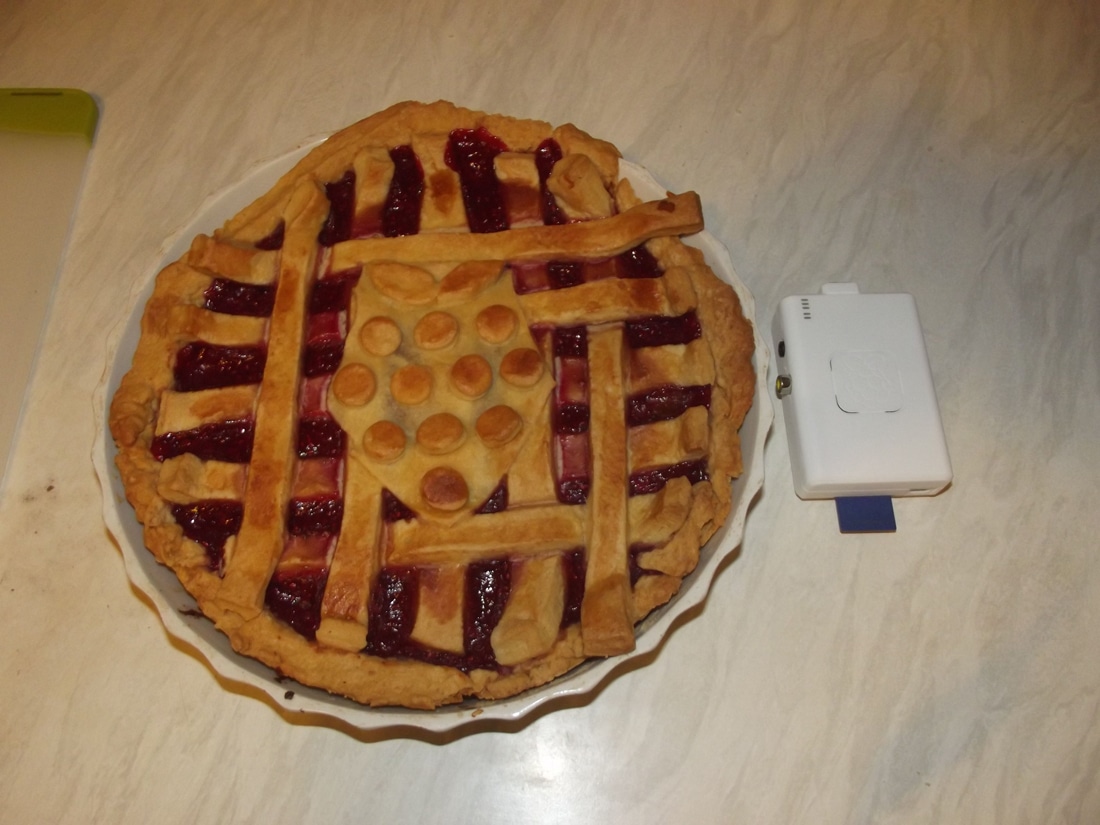I finally got my Raspberry Pi this week, and I can’t remember having this much fun since I played with my iPhone for the first time. Some people ask me why anyone would want a Pi when it’s so slow, but what those people must not realize is that Raspberry Pi has already evolved into a whole culture. It’s a piece of technology with charisma. The whole charm of a Raspberry Pi is in the fact that it’s an itty-bitty piece of powerful technology that can do so much in relation to its price, size and processing power. For once, it’s not about speed.
I’ve had a blast with mine so far, and I’ll take you on my journey from the past three days. I hope you’ll share your experience too so we can learn together. The first thing I did was download the default Debian image from the official Raspberry Pi site. I’ll admit, it was a little wonky. I also changed the default English (UK) keyboard to the English (US) keyboard. The next image I tried was OpenELEC. This is where the whole Raspberry Pi boots into a media player screen. It was a little bit of a challenge since I had to use Linux to create the image (boot into Ubuntu). The software the OpenELEC runs is XBMC.
Finally, I ended up with Rasbian [Raspberry Pi + Debian = Rasbian], which I found on Rasbian.org. It’s the custom Linux distribution designed and optimized specifically for the Raspberry Pi. The key here is that it’s optimized just for the Pi. I used the Hexxeh image. It’s surprisingly fast and seems very stable. I tried a few other images too which I won’t mention since I don’t want this article to be too long. It’s nuts to me that all of these fit on my 2GB SD card (although I definitely need to get a bigger one so I can try some of the other images). I’ve had the best time with my Pi, and if you’ve gotten yours already, I hope you have too! If you don’t have one yet (I’ve read there are 350,000 people who have ordered one but haven’t received it yet), you can always test it out by using one of the publicly available Raspberry Pi emulator platforms. Just hit up Google for info on that (or if you want to play some games in the meantime we highly recommend カジノシークレット).
After seeing the red Lego Raspberry Pi case in Richard’s article from last week, I was inspired to see what I could find when it comes to Pi cases, after all, mine needs a little house. What I found is the most geeky collection of Raspberry Pi cases you’ve ever seen. Whether it’s built with Lego, made out of cardboard, or even printed from a 3D printer, each one of these is so creative! I hope you enjoy these as much as I did.
Many Of These Images Enlarge If You Click On Them
“Blessed and cursed with an excess of LEGO and time, I built an absurd case for my Raspberry Pi.” ~Brian Gillespie [Check out more pics of this build here]
This one looks like some sort of Lego, Alien, Star Trek mashup. It’s one of my favorites on this list. It’s not even really a case, it’s more of an enclosure. It was created by flickr user karl101.
This case might look like just an acrylic box, but it’s much more than that. It’s designed for people who like to tinker and hack the heck out of their Pi. You can read the details on one of my new favorite sites – Adafruit.
This Pi case was printed on a 3D printer. I watched the video, and it’s nuts! Talk about geeky… You can read all the details on FreakyShape.
This is my favorite case out of them all. It’s just so beautiful in every way. It’s another one that you can print. I found it on Mr. Pj Evans. It’s a fold-up design (no glue needed). You can get download the template here.
This Lego case was made by an 8-year-old girl and her Dad. What a sweet family project. You can read all about it and see more pictures at Cross Dominant.
How about a flying car Pi case? Nice! You can learn more about this little concept design on Mod My Pi.
This case is currently part of a Kickstarter project. Not only is this prototype printed on a 3D printer, but Justin Hawkins even made his own 3D printer. Like he said, “a Raspberry Pi tastes best in a PiCrust.”
I saw this fun little case on A Bite Of. It is made from all recycled materials (duh!), and it apparently sold on eBay a few months ago.
This simple yet stunning red case might be more suitable for conservative Raspberry Pi geeks. I saw this one on Wired.
This is another printable case called The Punnet. If your home printer can handle really thick paper, you can make this right at home. You can get all the deets on Raspberry Pi.
This is a little plastic case design that was printed on a 3D printer. It was created to cost the least amount possible, and you can read about it on Marco Alici.
According to Mod My Pi, this is a Raspberry Pi case, but that doesn’t look like a Raspberry Pi to me. Either way, it’s got Star Wars minifigs incorporated into it, so I’m all over it.
Okay, I know, this picture isn’t about a case. But how could we have a Raspberry Pi article with no raspberry pie? This was a Father’s Day gift I saw on Raspberry Pi. Awww… so sweet. Whoever got this is a lucky Dad.















COMMENTS